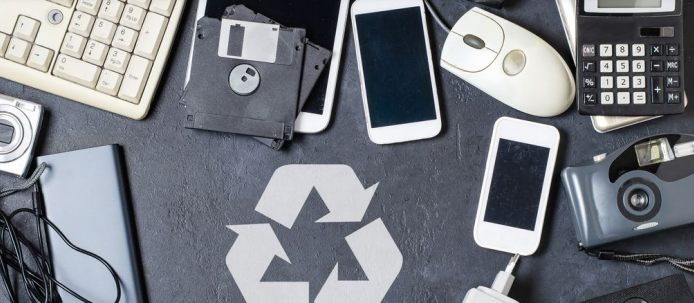E-waste management in Kenya: Regulatory landscape and what companies can do to safeguard the environment

E-waste refers to electronic products that are unwanted, not working, and nearing or at the end of their “useful life.” E-waste can also be any electrical or electronic equipment that’s been discarded. This includes working and broken items that are thrown in the garbage. E-waste is particularly dangerous due to toxic chemicals that naturally leak from the metals inside when buried.
E-waste has proven to be a fundamental challenge for Kenya over the years. Waste Electrical and Electronic Equipment Centre (WEEE Centre) states that Kenya generates an average of 3,000 tons of e-waste each year from electronic devices such as computers, monitors, printers, mobile phones, fridges and batteries just to mention a few. The situation is even worse globally.
Risks of E-waste
Most electronics contain toxic materials including beryllium, cadmium, mercury, and lead, which pose serious environmental risks to our soil, water, air, and wildlife. When e-waste is buried, the toxic chemicals can leak into the ground. Eventually, these traces of toxic materials find their way into underground water contaminating the water supply system.
This is a health risk for anyone using a natural well and nearby wildlife due to lead, arsenic, cadmium, and other heavy metal poisoning.
Policy governing e-waste in Kenya
The main legislation guiding e-waste management in Kenya is the Environmental Management and Coordination Act 1999 (Revised 2015) and the Waste Management Regulations (2006). These laws prohibit handling, transportation and disposal of waste without valid licenses issued by the National Management Authority (NEMA).
Kenya also published the National ICT policy through the Ministry of ICT (Information and Communication technology) in 2006. The ICT policy requires that electrical and electronic equipment dealers demonstrate their readiness to minimize the effects of their infrastructure on the environment before they can have their licenses renewed by the Communications Authority. Institutions generating e-waste are required to take full responsibility to conserve and protect the environment from the harmful effects of waste emanating from electric and electronic equipment.
NEMA in 2010 formulated the National E-Waste Guidelines to assist the government, private sector, learning institutions and other stakeholders to manage e-waste effectively to enhance environmental conservation. These guidelines also prescribe approaches to enhance environmental protection; environmental awareness; categories of e-waste and target groups; e-waste treatment technologies; and disposal procedures.
Kenya has also finalised the National E-Waste Strategy 2019 to guide the country in its management of E-waste. The Strategy aims at addressing E-Waste management through development of policies, guidelines and standards, undertaking baseline survey on E-waste generation and volumes to inform priority e-waste management infrastructure in the country.
How companies can reduce e-waste?
Promote the right to repair: One way for manufacturers to reduce e-waste is to actively seek ways to make it easier for consumers to repair their electronics.
Anticipate and embrace green legislation and policies: Regulatory restrictions are expected to continue to tighten in Kenya. Anticipating them can help manufacturers adapt their processes and operations sooner, save money and keep a competitive advantage as consumers are increasingly demanding sustainability from all businesses.
Implement recycling programmes: Implementing company-wide schemes and recycling programmes would make it easier for manufacturers to reduce e-waste and encourage consumers to return their old or broken devices.

